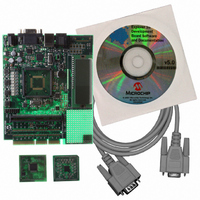DM240002 Microchip Technology, DM240002 Datasheet - Page 27

DM240002
Manufacturer Part Number
DM240002
Description
BOARD DEV EXPLORER 16 44-PIN
Manufacturer
Microchip Technology
Series
Explorer 16 44-pinr
Type
MCUr
Datasheet
1.DM240002.pdf
(42 pages)
Specifications of DM240002
Contents
Explorer 16 Dev Board, PIC24FJ64GA004 and dsPIC33FJ32GP204 PIM Modules
Processor To Be Evaluated
PIC24FJ128GA010, dsPIC33FJ256GP710
Processor Series
PIC 24, dsPIC33
Data Bus Width
32 bit
Interface Type
RS-232
Silicon Manufacturer
Microchip
Core Architecture
PIC, DsPIC
Core Sub-architecture
PIC24, DsPIC33
Silicon Core Number
PIC24F, DsPIC33F
Lead Free Status / RoHS Status
Lead free / RoHS Compliant
For Use With/related Products
dsPIC30, dsPIC33, PIC32, PIC24FJ, PIC24HJ
Lead Free Status / Rohs Status
Lead free / RoHS Compliant
Available stocks
Company
Part Number
Manufacturer
Quantity
Price
Company:
Part Number:
DM240002
Manufacturer:
Microchip Technology
Quantity:
135
Company:
Part Number:
DM240002
Manufacturer:
MICROCHIP
Quantity:
12 000
© 2007 Microchip Technology Inc.
3.2.6
Mechanical switches play an important and extensive role in practically every com-
puter, microprocessor and microcontroller application. Mechanical switches are inex-
pensive, simple and reliable. However, switches can be very noisy electrically. The
apparent noise is caused by the closing and opening action that seldom results in a
clean electrical transition. The connection makes and breaks several, perhaps even
hundreds, of times before the final switch state settles.
The problem is known as switch bounce. Some of the intermittent activity is due to the
switch contacts actually bouncing off each other. Imagine slapping two billiard balls
together. The hard non-resilient material doesn’t absorb the kinetic energy of motion.
Instead, the energy dissipates over time and friction in the bouncing action against the
forces push the billiard balls together. Hard metal switch contacts react in much the
same way. Also, switch contacts are not perfectly smooth. As the contacts move
against each other, the imperfections and impurities on the surfaces cause the electri-
cal connection to be interrupted. The result is switch bounce.
The consequences of uncorrected switch bounce can range from being just annoying
to catastrophic. For example, imagine advancing the TV channel, but instead of getting
the next channel, the selection skips one or two. This is a situation a designer should
strive to avoid.
Switch bounce has been a problem even before the earliest computers. The classic
solution involved filtering, such as through a resistor-capacitor circuit, or through re-set-
table shift registers (see Figure 3-4 and Figure 3-5). These methods are still effective
but they involve additional cost in material, installation and board real estate. Debounc-
ing in software eliminates these additional costs.
FIGURE 3-4:
FIGURE 3-5:
Lesson 6: Switch Debouncing
SW
SW
FILTERING DEBOUNCE SOLUTION
SHIFT REGISTER DEBOUNCE SOLUTION
Debounce
Clock
+V
R1
R1
44-Pin Demo Board Lessons
+V
D
CLK
R2
C
CLR
1
Filtered
Switch
Output
Qn
Filtered
Switch
Output
DS41296B-page 23












